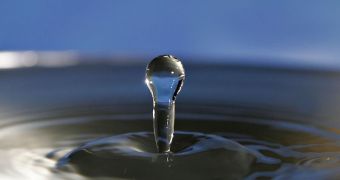A group of researchers in Germany announce the development of a new technique that enables them to heat up a small sample of water to temperatures exceeding 600 degrees Celsius (1,112 ºF) in just a picosecond, or a trillionth of a second.
The method is still only theoretical at this point, in the sense that the devices necessary to apply it have not yet been constructed. It was developed by researchers with the DESY Center for Free-Electron Laser Science, which is a collaboration of the Max Planck Institute and the University of Hamburg.
The technique works by using a very concentrated pulse of terahertz radiation. While having this capability may not seem all that important at first, scientists could use such a device to initiate thermally-activated reactions at critically-important times, which would enable them to study a host of phenomena in more detail.
According to the research team, which was led by DESY expert Oriol Vendrell, a molecular dynamics software was used to create the simulation. Scientists basically modeled what would happen if a very strong flash of terahertz radiation would hit a relatively small sample of water.
Terahertz radiations occupy a portion of the electromagnetic spectrum between infrared light and microwaves, so they have low-energy wavelengths. Still, a concentrated pulse would be enough to make water boil, Chemistry World reports.
Vendrell says that the DESY facility is capable of producing the experimental setup needed to test this theoretical method. The installation's free electron laser is capable of creating the type of terahertz radiation blast needed to test the team's hypothesis.
The team leader goes on to say that a single radiation pulse would be capable of heating just one nanoliter of water at a time. The vapors that would be produced in this manner would last for around a millisecond, perhaps even less.
“Most chemistry of importance to nature and society occurs through thermal processes, whereas currently nearly all ultrafast initiations of chemical reactions are triggered by optical excitations,” says Stanford University researcher Anders Nilsson, who was not a member of the research team.
“Here, the authors show through molecular simulations that [terahertz] excitations can induce hydrogen bond breaking in water by affecting the essential low energy vibrations that are accessible by thermal energy. With the development of new x-ray sources to probe matter on ultrafast timescales this opens up alternative avenues to stimulate chemistry,” the expert concludes.

 14 DAY TRIAL //
14 DAY TRIAL //